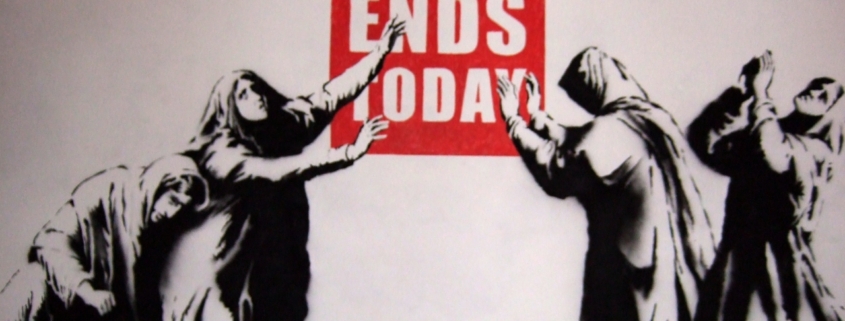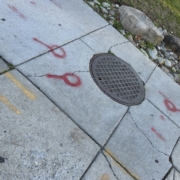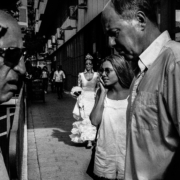Recognizing the Power of Satire in Graffiti and Street Art
Multiple types of graffiti and street art can be found in public spaces throughout the world. Not only does this work transcend the techniques used in its creation, the places where it appears, but most importantly its content.
Some of the most memorable, pivotal, impactful, or even shocking kinds of graffiti and street art (conveyed in terms of a written expression, imagery, or both), is work that might be considered to be satirical. It pokes fun at public figures, organizations, or entire countries.
Examples of this kind of thought-provoking work include, but is not limited to:
- Banksy‘s iconic “Girl with a Balloon” and powerful statement “There Is Always Hope.”
- Blu’s mural in Bologna, Italy, depicting various military and political figures engaged in a giant game of war-themed Monopoly.
- JR’s Women Are Heroes Project featuring portraits of women from different parts of the world, challenging social norms and promoting awareness of women’s issues.
- Shepard Fairey’s iconic OBEY Giant campaign critiquing propaganda and conformity.
- Swoon’s paper cutouts, addressing social issues like poverty, homelessness, and inequality.
However, it’s essential to recognize that what makes these graffiti and street artists (and their pieces) stand out is their frequent use of satire. This work isn’t merely a manifestation of resistance; it’s a deliberate attempt to force us to stop and possibly consider “what is wrong with this picture” and why the situation it depicts should be addressed.
Whether this sign and signification motivates us to engage in some form of political participation (e.g., join a protest, donate money to a cause, etc.) is a different matter, one best addressed at a different point in time.
And, predictably, dictators, leaders, authoritarian regimes, and powerful interests try to abate graffiti and street art that challenges their benevolent and peace-loving narrative. Yet, in today’s digital age although the piece of graffiti and/or street art might be defaced, painted over or abated, photos of the piece can be distributed on all manner of social media, spreading the graffiti writer or street artist’s message further.
However, the narrative doesn’t conclude with the act of creation, removal and distribution, nor the possibility of motivating people to take action.
When, and if, these creators gain fame or positive recognition and transition into more commercial and possibly gallery spaces, persistent interrelated questions arise:
Does this progression in the individual’s career compromise or dilute their original message? Does this mean that they have “sold out”? Must all graffiti and street artists evolve from tagging to more intricate social commentary that involve the use of satire in their pieces to establish their names, and perhaps financially support themselves engaging in their craft?
These questions, unanswered here, linger inviting further reflection, research and scholarship for individuals interested in thoughtfully considering the impact of this kind of work.
Photo Credit
Photographer: supergiball
Photo title: Banksy












